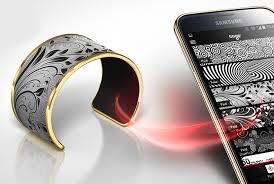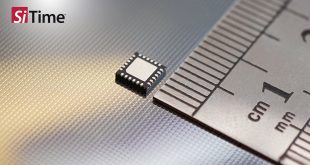The E-paper display market is expected to globally grow by an estimated $4,274 million by 2022, shedding light on a lucrative market opportunity for companies exploring new ways to innovate and differentiate from their competition.
Boasting a range of benefits from daylight readability, robustness and extremely low-power consumption, compared to traditional glass displays, plastic electrophoretic displays (EPDs) are allowing for the development of radically new products, opening up new markets and providing additional revenue streams for companies. But more than that, plastic EPD applications are providing the missing link between vision and reality for savvy innovators. In this article, Tim Burne, CEO, Plastic Logic, focuses on two real-life innovative applications of product innovation with plastic displays.
Conferences and networking events
Take conferences for example, entrepreneur Bill Munday’s research identified that the average delegate only exchanges contact details with just 3 people. Inspired by all these missed connections, Bill founded Blendology an event solutions company with a unique interactive oneTap technology that allows users to make real-life connections and build online networks with a simple tap of their special delegate badges.

The badge uses a 4-inch plastic display that comes with a logic controller that acts as an interface between the badge and the Blendology app. One badge costs US$60 but as it’s designed for reuse, it will pay for itself in just three events if rented out at US$20.
The EPD brings a range of benefits to Blendology’s pioneering electronic badges. Firstly, they are robust enough to withstand any resistance when tapped or dropped. They also have extremely low power consumption which allows them to be used over a series of days without charging. The lightweight nature of the technology also makes the badges comfortable for delegates to wear around their neck for long periods of time, and the always-on display offers a nice, readable reflective display, similar to that of paper.
Perhaps most interestingly, the displays also enable various functionality from viewing venue maps and conference agendas. This sets them apart from traditional badges and the ease of repeated customisation and re-use makes them a real game-changer for the events industry.
But practical applications are not the only reasons for using EPDs. We have seen an increasing need in the wearables sector for displays to be more aesthetic i.e. where the technology is hidden and the focus is on the design.
Fashion technology
Zoli Kovacs, CEO of Budapest-based L!BER8 Technology wanted to create a range of wireless, battery-free, fashion wearables that symbolise the next level in customisation, personalisation and aesthetics. Known as ‘Tago Arc’, the elegant smart-bracelet features a flexible plastic display that adapts to a wide array of patterns and designs depending on the wearer’s style and mood.

The display reaches end-to-end from the metal rims of the bracelet – so the entire surface can display the various patterns, which are selected and synced wirelessly through a mobile phone app. The app gives users a choice of over 10,000 different patterns, and the ability to personalise their own images that can easily be selected and applied to the bracelet.
Inspired by the potential of EPDs L!BER8 is not stopping here. In fact, they have more projects and ideas in the pipeline around new types of display technologies, extensions of displays and display upgrades and the team aims to use plastic displays again for these projects too.
Plastic displays may not be the perfect solution for every application, but they are still disrupting a huge range of markets. Therefore, designers would be savvy to tap into opportunities early on and turn innovative consumer-driven ideas into practical and aesthetic realities.
 CIE Components in Electronics
CIE Components in Electronics



